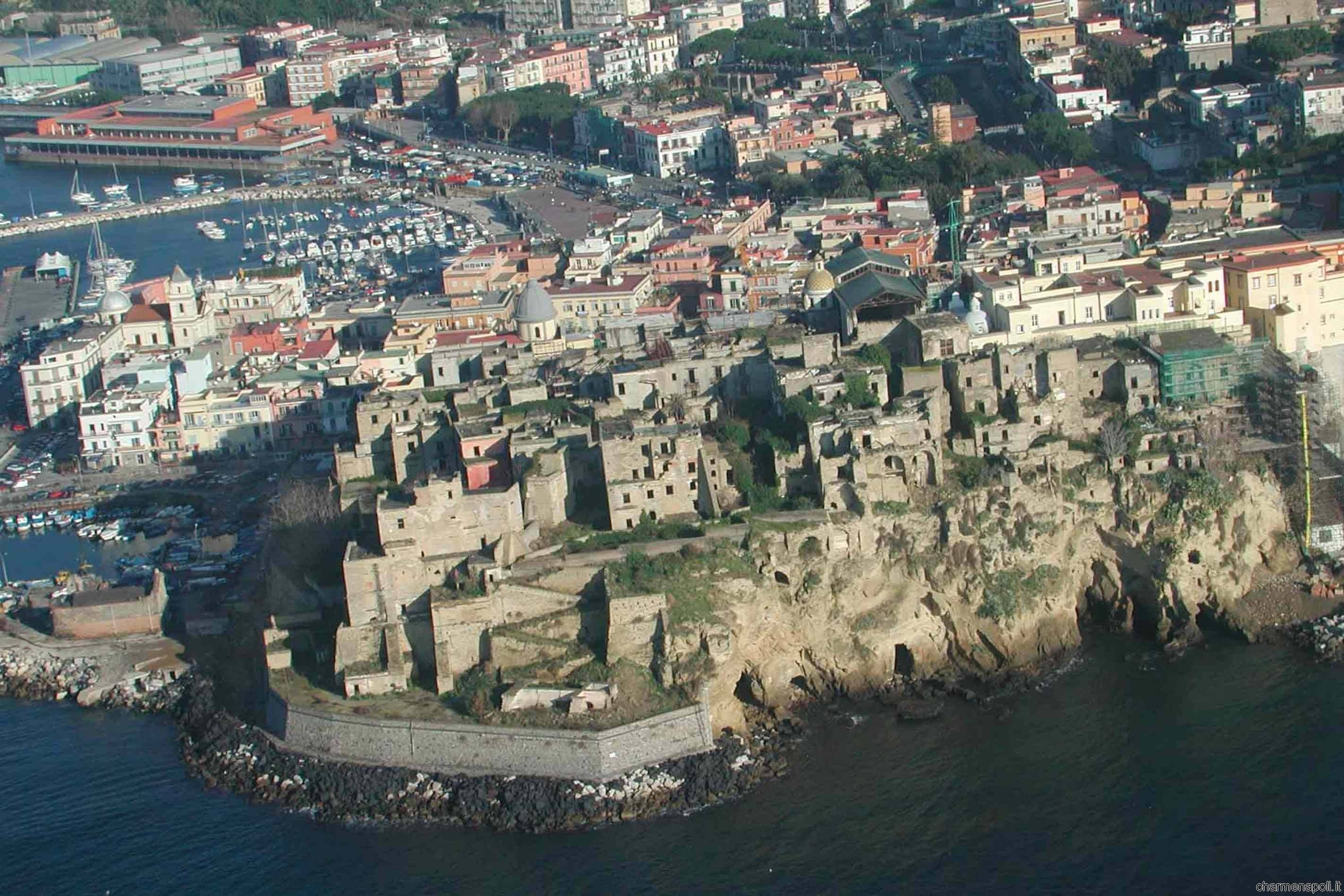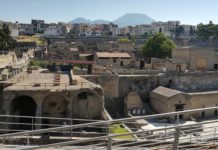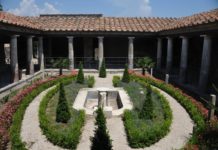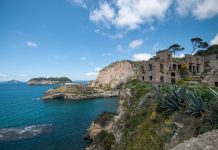The Cathedral has been the first to be opened for visitors, after half a century of oblivion. Now, from September on, the underground archaeological path will be open to visits after seven years. In the heart of Phlegraean land, there is a casket that is showing its invaluable treasure to the world: it is called “Rione Terra” and it shines with history, among the depths of ancient Pozzuoli. The municipality, together with the Superintendency, and thanks to the funds given by the Region Campania, has worked hard to give back to international tourism one of the most charming places of Campania Felix. The starting point has been the relaunch of the archaeological path of Rione Terra, off-limits since autumn 2007, but today ready to be given back to the visitors for 15 week-ends, from the 19th of September to the 6th of January 2016.
There are two projects to make the most of the area of Pozzuoli’s stronghold. The first is the organization of the exhibition “Alle origini del Gusto” (“At the Origins of Taste”) dedicated to age-old relation between men and food, showing also the reconstruction of a garden from ancient Pompeii. The second, called “TerraMoto”, is aiming at the realization of a promotional event that unites food with historical and archaeological places in Pozzuoli, in line with the objectives of Expo 2015 in Milan. There are twentysix sites (like Anfiteatro Flavio, the Serapeum, the Cathedral, and Antonino Pio Stadium); ten wineries and restaurants of the Phlegraean territory. There will be a sort of “gran tour”, thought to delight the visitors and the art, history, and taste lovers. “A challenge – according to the mayor, Vincenzo Figliolia – so charming because the future of Pozzuoli can be outlined only enhancing its glorious past”. And it is true, suffice to give a look at the tufa hill, with its 33 metres on the sea level, protruding on the Gulf between Nisida and Baia.[charme-gallery] Let’s start explaining the name “Rione Terra”. This toponym derives from the Medieval and maritime way of calling terra (“land”) the village or the city, in contrast with the sea. We are talking about a special place. A place, like the anchorman Alberto Angela said, “where the chapters of the long history of Pozzuoli are one over the other like the pages of a book”. One of the few hamlets in the world that has been protagonist of different historical evolutions: since the years of the Greek and Roman settlements until the Modern age. On March 1970, the acropolis was abandoned after the umpteenth great swarm of bradyseism. The swarms repeated after ten years, with the earthquake of November 1980 first, and then with a new swarm of bradyseism. Dramatic events, that led to the ruin of this place.
Puteoli was an important city during the Roman age, because, before the foundation of Ostia, it was the biggest harbour of the Urbe. Rione Terra was the hearth of Puteoli: the first and oldest housing nucleus, colonized in the VI century B.C. from the Greek exiles from Samos, that arrived there to found Dicerachia, the government of the just. The hamlet was founded on a hill, a tradition of the settlers from Magna Greece, who used to choose a strategic position from which it was possible to organize a quick defense from the enemies arriving by sea or by land.[charme-gallery] During the period of Urbe, Pozzuoli and its stronghold flourished, then, with the decadence of Rome, the city began its slow decline. This happened in the V century A.C., when the Rione started its “stratification” and the different peoples began to build shops and houses on the Roman ones: bricks on bricks, buildings on buildings. The numerous archaeological findings from the depths of Rione, whose archaeological area is two square km wide, confirm all that.
Among the various discoveries, there are the traces of a Cardine and two Decumans, still showing the insulae, with houses, warehouses, and taverns; the walls of a vast thermal complex, and the remains of the Temple of Augustus, on whose ruins, during the Spanish domination, was built the Cathedral of San Procolo Martire, destroyed by a fire during the night between the 16th and the 17th May 1964 and restored only in recent times.
During the restoration of the Cathedral, there was an enhancement of the various historical phases that the city underwent during the different centuries, from the religious complex to the tufa stronghold. The great fire of 1964 brought to light the remains of a marble monument made probably by the architect Lucius Cocceius Auctus, which had previously included also a temple dating back to 194 B.C., restored by Sulla in 78 B.C. and “absorbed”, together with the Augustan basilica, from the Christian wall system.
The future archaeological campaigns could bring to light new important findings, as it is already happened in the end of 2012, where in the heart of Rione Terra, behind a door dating to the 1600s, the archaeologist have found five rooms of a Roman domus, decorated with frescoes and dating to the I century B.C. An exceptional finding, that enriches the casket of the hidden beauties of the acropolis. Hopefully, tomorrow can give us many marvellous discoveries.

 Italiano
Italiano














